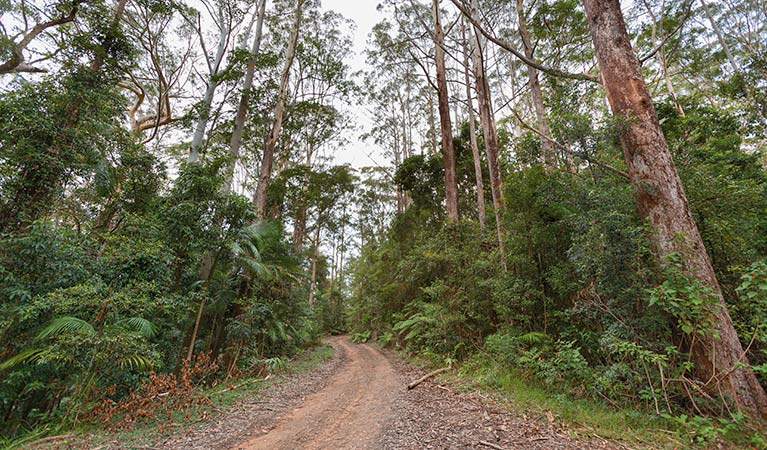End Peak walking track
Ulidarra National Park
Overview
End Peak walking track is a challenging walk that offers rewarding panoramic views of Coffs Harbour from Ulidarra National Park’s highest point. It’s great for birdwatching and for a picnic with a view.
- Where
- Ulidarra National Park in North Coast
- Distance
- 3.2km return
- Time suggested
- 1hr 30min - 3hrs 30min
- Grade
- Grade 4
- Trip Intention Form
-
It's a good idea to let someone know where you're going. Fill in a trip intention form to send important details about your trip to your emergency contact.
- What to
bring - Drinking water, hat, suitable clothing, sunscreen
- Please note
- Remember to take your binoculars if you want to go birdwatching.
If you’re looking to experience nature and get away from it all for a few hours, End Peak walking track is for you. A short drive from Coffs Harbour, and within moments you’ll be surrounded by a rich tapestry of vibrant green colours.
This challenging escarpment walk traverses old-growth blackbutt forest, tall wet forests and rainforests. There are a few steep sections of track, but they just add to the adventure and the challenge. Bring a picnic lunch and enjoy picnicking from the highest point in Ulidarra National Park, with filtered glimpses of Coffs Harbour.
There’s plenty of native wildlife to admire along the way, including koalas and an abundance of birdlife, so if you enjoy birdwatching, keep your binoculars handy. Ulidarra National Park is home to 125 bird species, so you’re bound to see something colourful along the way, such as the beautiful satin bowerbird.
Map
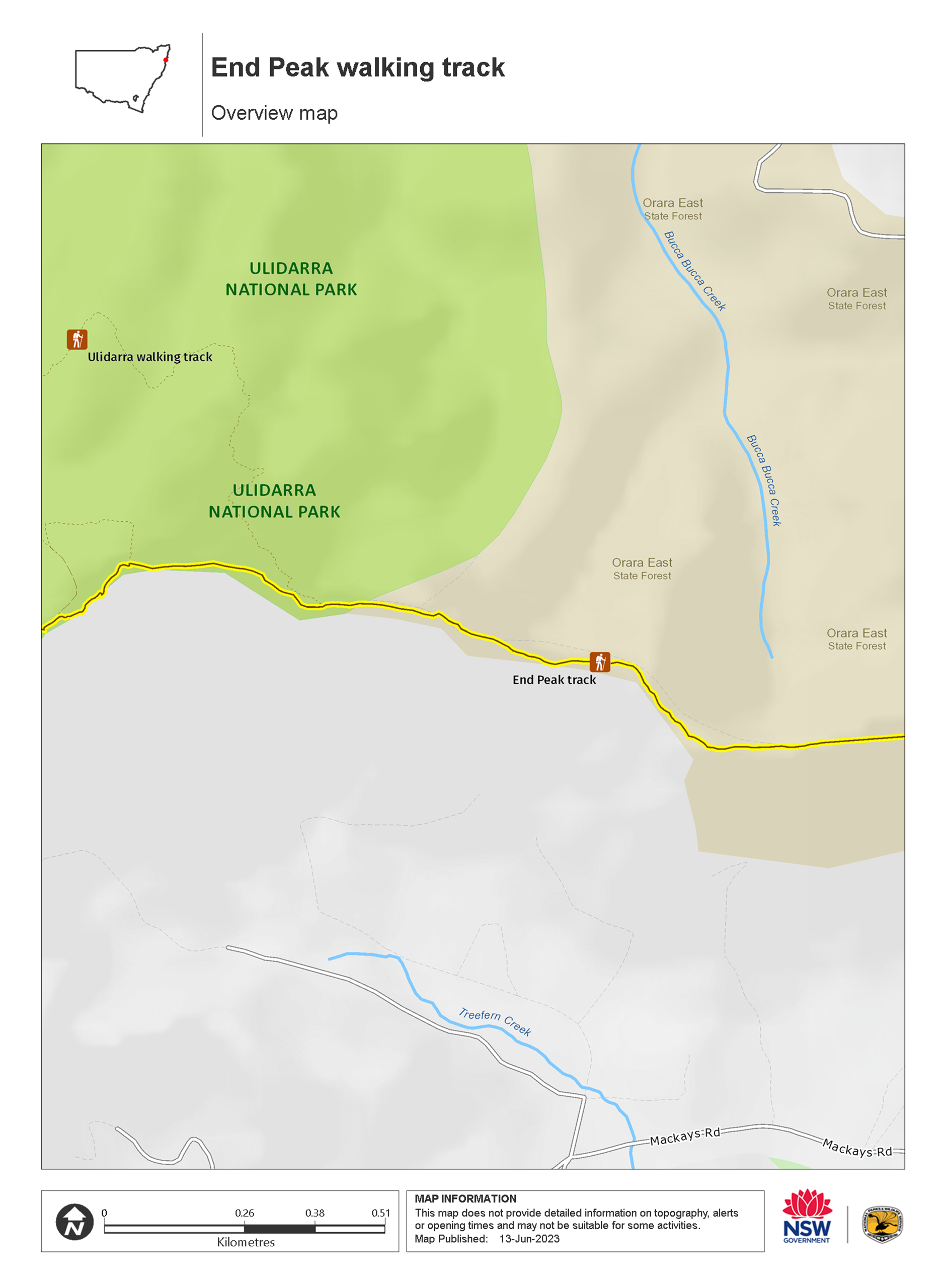
Map legend

Local alerts
For the latest updates on fires, closures and other alerts in this area, see https://uat.nswparks.cloud/things-to-do/walking-tracks/end-peak-walking-track/local-alerts
General enquiries
- National Parks Contact Centre
- 7am to 7pm daily
- 1300 072 757 (13000 PARKS) for the cost of a local call within Australia excluding mobiles
- parks.info@environment.nsw.gov.au
Park info
- in Ulidarra National Park in the North Coast region
Ulidarra National Park is always open but may have to close at times due to poor weather or fire danger.
Visitor info
All the practical information you need to know about End Peak walking track.
Maps and downloads
Learn more
End Peak walking track is in Ulidarra National Park. Here are just some of the reasons why this park is special:
Land of Gumbaynggir
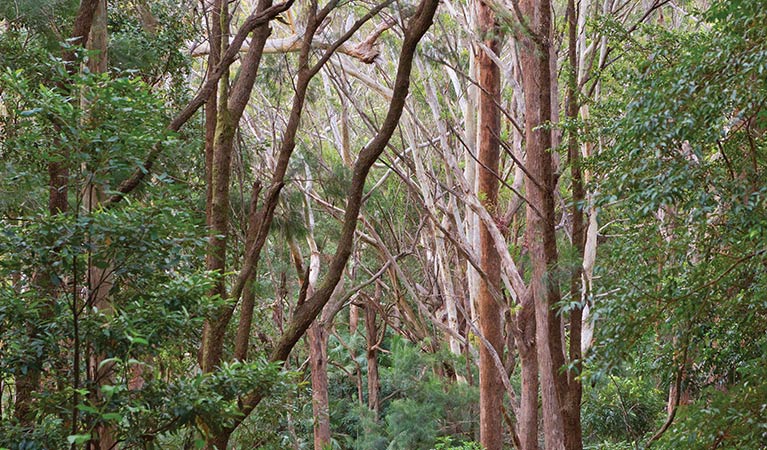
As you explore the remote bushland and admire the unspoilt beauty of Ulidarra National Park, you'll be walking on the traditional lands of the Gumbaynggirr People. The park is part of a larger 'men's area' and was once used for hunting and gathering of bush foods and medicines. The area continues to have special significance for Gumbaynggirr people as it connects them with their Dreamtime stories.
- Ulidarra walking track Ulidarra walking track is a peaceful walk through the sub-tropical rainforest of Ulidarra National Park. 11km from Coffs Harbour and offering stunning views, it’s perfect for a day trip.
Mid North Coast menagerie
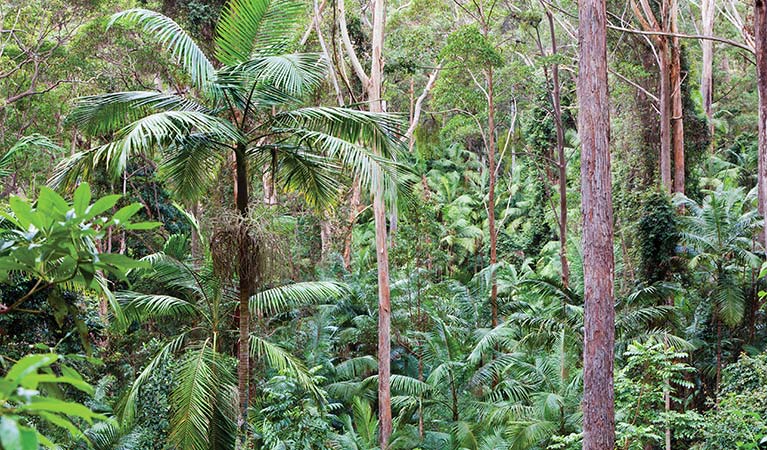
Along with the adjoining Bruxner Park Flora Reserve, Ulidarra provides important habitats for a diverse range of wildlife, including koalas, masked owls, dingoes and little bent-wing bats. Some 232 native vertebrate species make this beautiful place their home, including 40 different mammals, reptiles, frogs and fish. If you're lucky, you might spot threatened species such as Stephens banded snakes, yellow-bellied gliders and powerful owls. There are also 125 different bird species found in Ulidarra, making it a haven for birdwatching. Amongst the myriad of birds you'll find here, you might catch a glimpse of threatened species such as glossy black-cockatoos, brown tree-creepers, barred cuckoo-shrikes, black bitterns, barking owls, powerful owls, wompoo fruit-doves and rose-crowned fruit-doves.
- End Peak walking track End Peak walking track is a challenging walk that offers rewarding panoramic views of Coffs Harbour from Ulidarra National Park’s highest point. It’s great for birdwatching and for a picnic with a view.
- Ulidarra walking track Ulidarra walking track is a peaceful walk through the sub-tropical rainforest of Ulidarra National Park. 11km from Coffs Harbour and offering stunning views, it’s perfect for a day trip.
Park of the people
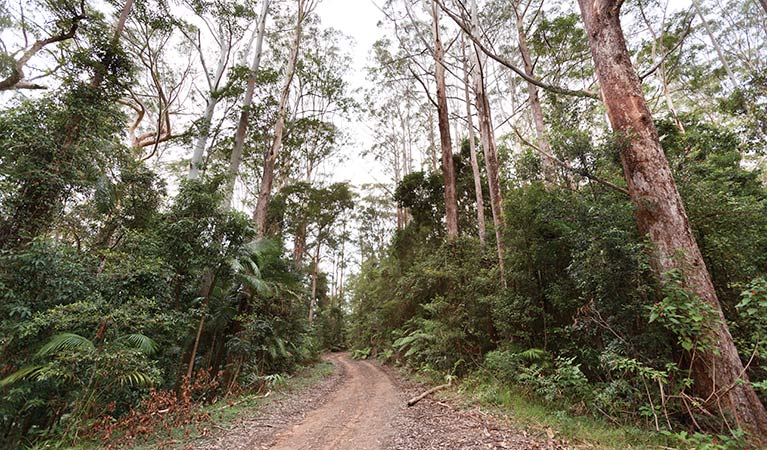
From the early 1880s, Ulidarra National Park and the adjoining Bruxner Park Flora Reserve were used for logging. Throughout the park, you might come across tree stumps that bear the scars of board cuts, a style of tree felling that took place up until the early 1950s. Starting in the early 1930s, local community lobbying for the protection of these areas has seen the protection of Bruxner in 1933, the establishment of Bruxner Park Flora Reserve in 1958, and later the establishment of Ulidarra and nearby Bindarri National Park in 1999.
Precious plant life
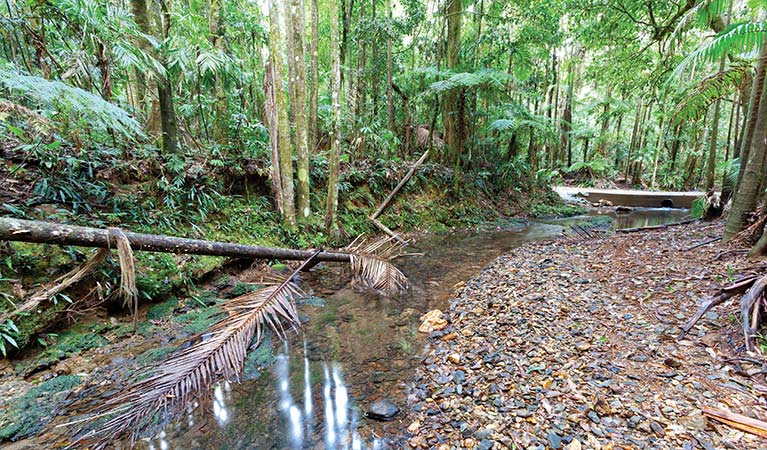
Ulidarra National Park provides an important link between the hinterland and plateau habitats of the World Heritage-listed Dorrigo National Park, connecting the mountain ranges of Tuckers Nob in Bindarri National Park to the coastal habitats of Moonee Beach Nature Reserve and Coffs Coast Regional Park. The park conserves rare lowland rainforest, with species such as red carabeen, booyong and bangalow palms. You'll also find old growth sclerophyll forest with coastal blackbutt and turpentine trees, and small areas of wet sclerophyll forest dominated by brushbox.
- End Peak walking track End Peak walking track is a challenging walk that offers rewarding panoramic views of Coffs Harbour from Ulidarra National Park’s highest point. It’s great for birdwatching and for a picnic with a view.
Plants and animals protected in this park
Animals
-

Koala (Phascolarctos cinereus)
One of the most renowned Australian animals, the tree-dwelling marsupial koala can be found in gum tree forests and woodlands across eastern NSW, Victoria and Queensland, as well as in isolated regions in South Australia. With a vice-like grip, this perhaps most iconic but endangered Australian animal lives in tall eucalypts within a home range of several hectares.
-

Grey-headed flying-fox (Pteropus poliocephalus)
The grey-headed flying fox is Australia's largest native bat, with a wingspan up to 1m. This threatened species travels up and down south-eastern Australia and plays a vital role in pollinating plants and spreading seeds in our native forests.
-

Eastern bentwing-bat (Miniopterus schreibersii oceanensis)
Eastern bentwing-bats congregate in caves across the east and north-west coasts of Australia, in colonies of up to 150,000. These small Australian animals weigh around 13-17g and can reach speeds of up to 50km per hour. Eastern bentwing-bats use both sight and echolocation to catch small insects mid-air.

